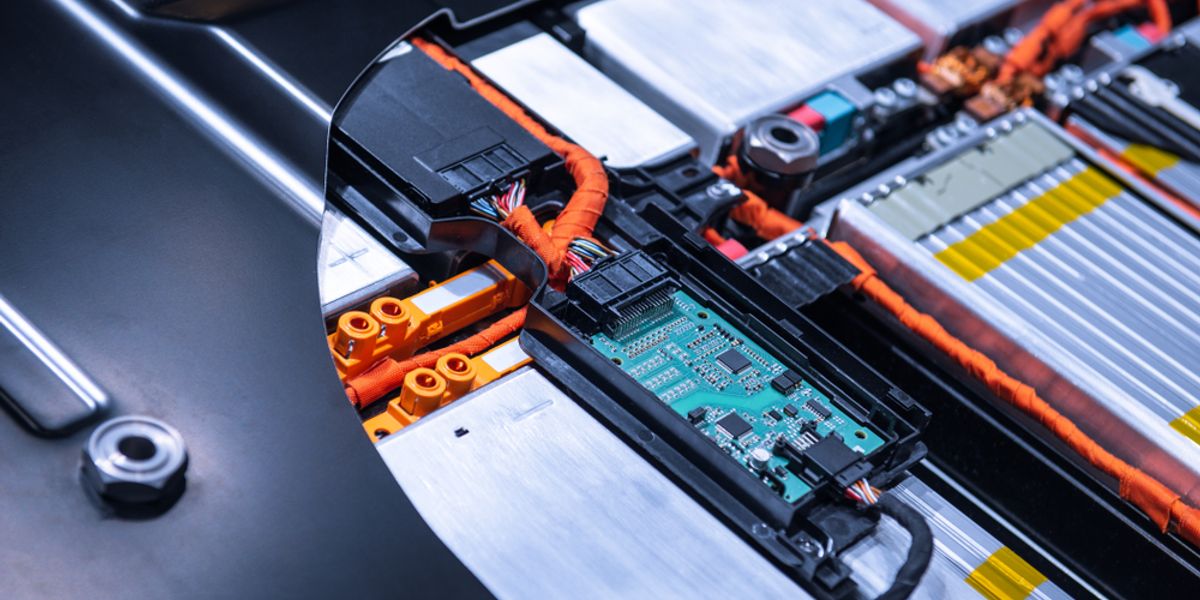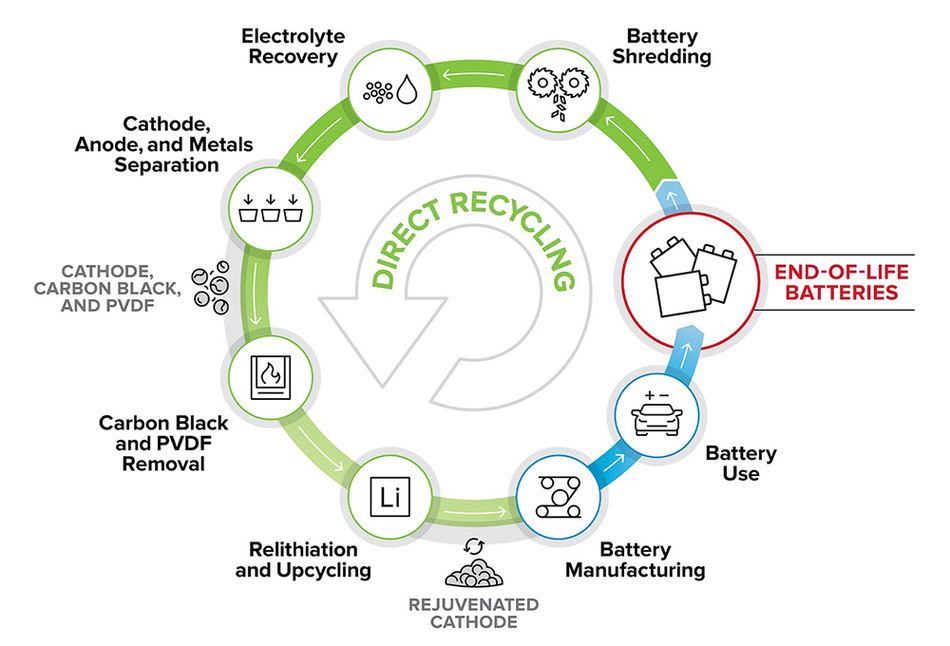EV Battery recycling still being defined

Battery recycling experts at the 2023 Battery Show North America indicate a sustainable recycling business model is coming into focus.
This article was first published on
www.sae.orgFREE REPORT: Reducing Human Driver Error and Setting Realistic Expectations with Advanced Driver Assistance Systems
Thousands die or are injured each year in automobile crashes. Bringing automated driving systems technologies into the advanced driver assist systems (ADAS) and connected vehicle space will help humans drive more safely and better prepare us for automated vehicles (AVs).
Learn more about ADAS and ADS implementation with the goal of reaching zero deaths and serious injuries by downloading this FREE report from SAE International (valued at $50).
Battery Recycling Inevitable
The efficient and economical recycling of EV batteries is not just possible, but inevitable, said a panel of battery-recycling experts at the 2023 Battery Show North America in Novi, Mich.
Panelists indicated that although the business model is evolving – and is likely to remain comparatively fluid for the near term – the sector’s broad directionals are firming and at least a few aspects of the business have become certain – one being that EV batteries ending up in landfills “absolutely will not happen,” asserted Renata Arsenault, Technical Expert for Advanced Battery Recycling at Ford.
Equally important, established recycling companies and startups understand that the EV battery recycling environment will be diverse and require a variety of players at various points and places in the recycling process, said Mike O’Kronley, CEO of Ascend Elements, a startup with a proprietary process focused on recycling material specifically for lithium-ion battery cathodes. He said there will be numerous companies with various specialties needed at different points – geographically and within the recycling process. Localization of both materials supply and operations will be vital as recycling matures, added Ford’s Arsenault.
Initiating EV battery recycling will take time to reach the scale and efficiency of recycling entire vehicles, for example, because batteries are more complicated, said Ryan Melsert, CEO at American Battery Technology Company (ABTC), which has a system to recover the individual minerals in lithium-ion batteries. Melsert said the comparative newness of automotive lithium-ion batteries also means recycling processes have yet to reach the efficiencies and scale of established recycling, such as that for lead-acid batteries.
Moreover, Melsert said, EV battery recycling must be much more “holistic” in its approach because it will be a requirement to recover more than the “token elements” sought by some systems. “As batteries get higher-performance and more complex, so will the recycling process,” he said.

Open- and closed-loop approaches
How automakers and recyclers eventually collaborate remains a question as recycling progresses through early stages of startup, but most panelists agreed that that eventual result is likely to be a “closed loop” process in which automakers form close partnerships with recyclers in what becomes a model in which the automaker “controls materials almost indefinitely, said ABTC’s Melsert. He added that closed-loop arrangements also will help to provide “security of supply” to automakers and their closely-aligned battery-manufacturing partners.
A closed-loop system also will be essential, panelists believed, because of eligibility requirements connected to incentives from the federal government’s Inflation Reduction Act. Retaining control of domestically produced materials, from mining through recycling and reuse, will ease the burden of complying with IRA dictates and also allow manufacturers to retain a steady flow of materials not necessarily subject to the economics of the commodities market.
“If you’re an OEM, you don’t want to sell that [recycled] material to the highest bidder,” confirmed Ascend’s O’Kronley, saying the material is too important to release to an open market. He said that although the industry will see elements of both open- and closed-loop systems for some time, EV battery recycling is almost certain to evolve to a mostly closed-loop environment.
Ford’s Arsenault agreed, saying, “In the early years, we’re going to be somewhat more transactional.” But “the Holy Grail for all of us is to have the fully-closed loop. It seems it would be much more efficient for our customers, too.”
Not much life for second-life
Meanwhile, the panelists had a dim view of the potential for so-called “second-life” use of entire EV batteries once those batteries become too depleted for effective use in a vehicles. Second-life applications – often cited as a viable competitor for recycling – just won’t be the best use of the valuable battery materials, most panelists asserted.
Second-life usage “has a lot of barriers,” said Gerardo Ramos-Vivas, Battery Lifecycle senior manager, Toyota Motor North America. “Right now, we’re thinking that’s way out there [in the future].”
Ascend’s O’Kronley agreed, adding, “I think the second-life market is going to be a lot smaller than we think about. I truly believe that batteries will be for the life of the vehicle,” and that once a battery has reached the end of its useful life, it will be more efficient and economical to recycle its elements rather than keep the entire battery for a secondary purpose.
Second-life usage is “going to be a smaller market than a lot of people are thinking,” said ABTC’s Melsert. He said there’s been an overestimation, as one example, of the stationary-source market’s potential use of second-life automotive batteries. He said it is becoming clearer that stationary sources likely will converge on the desire to use premium-performance batteries rather than make use of repurposed batteries.
